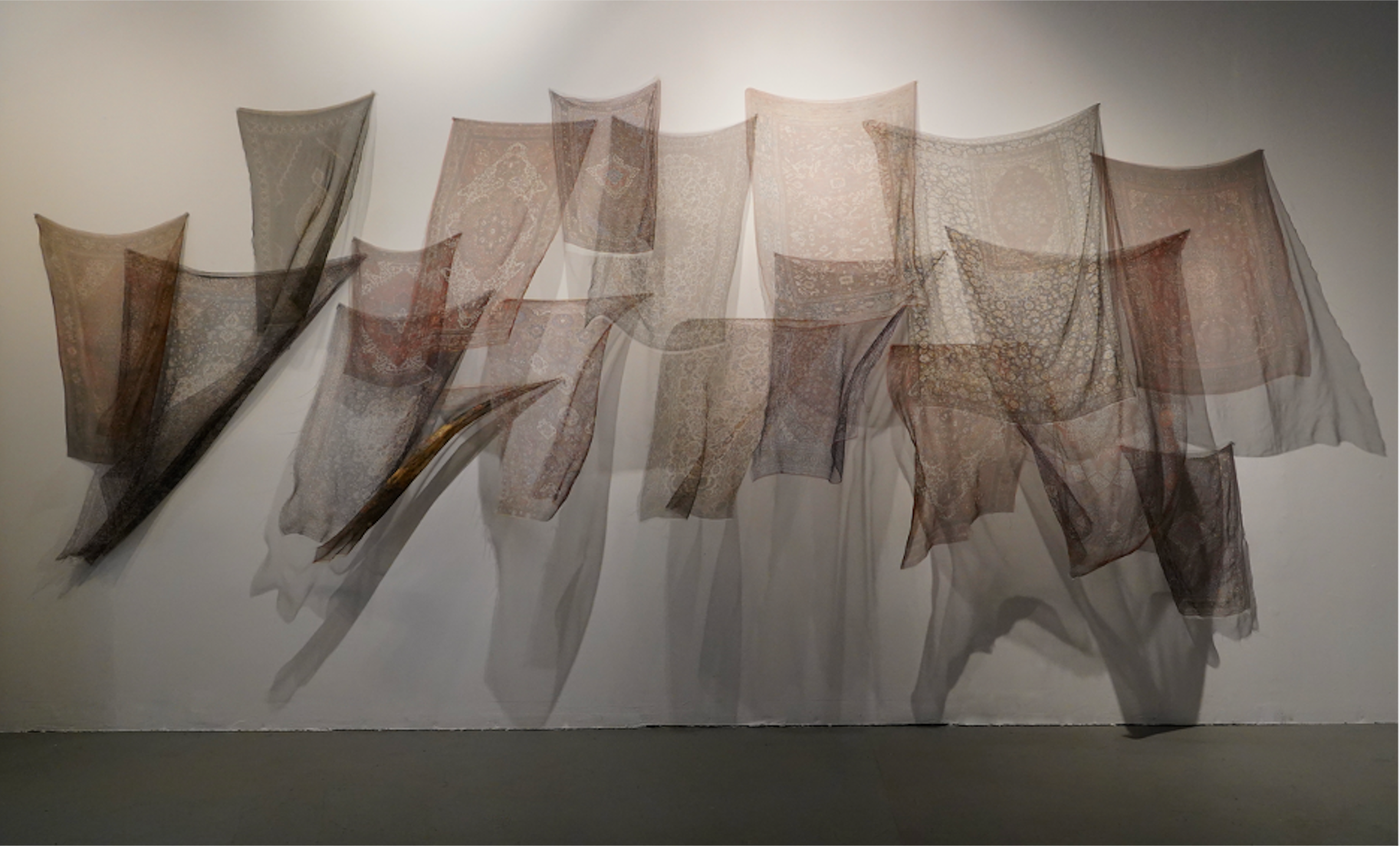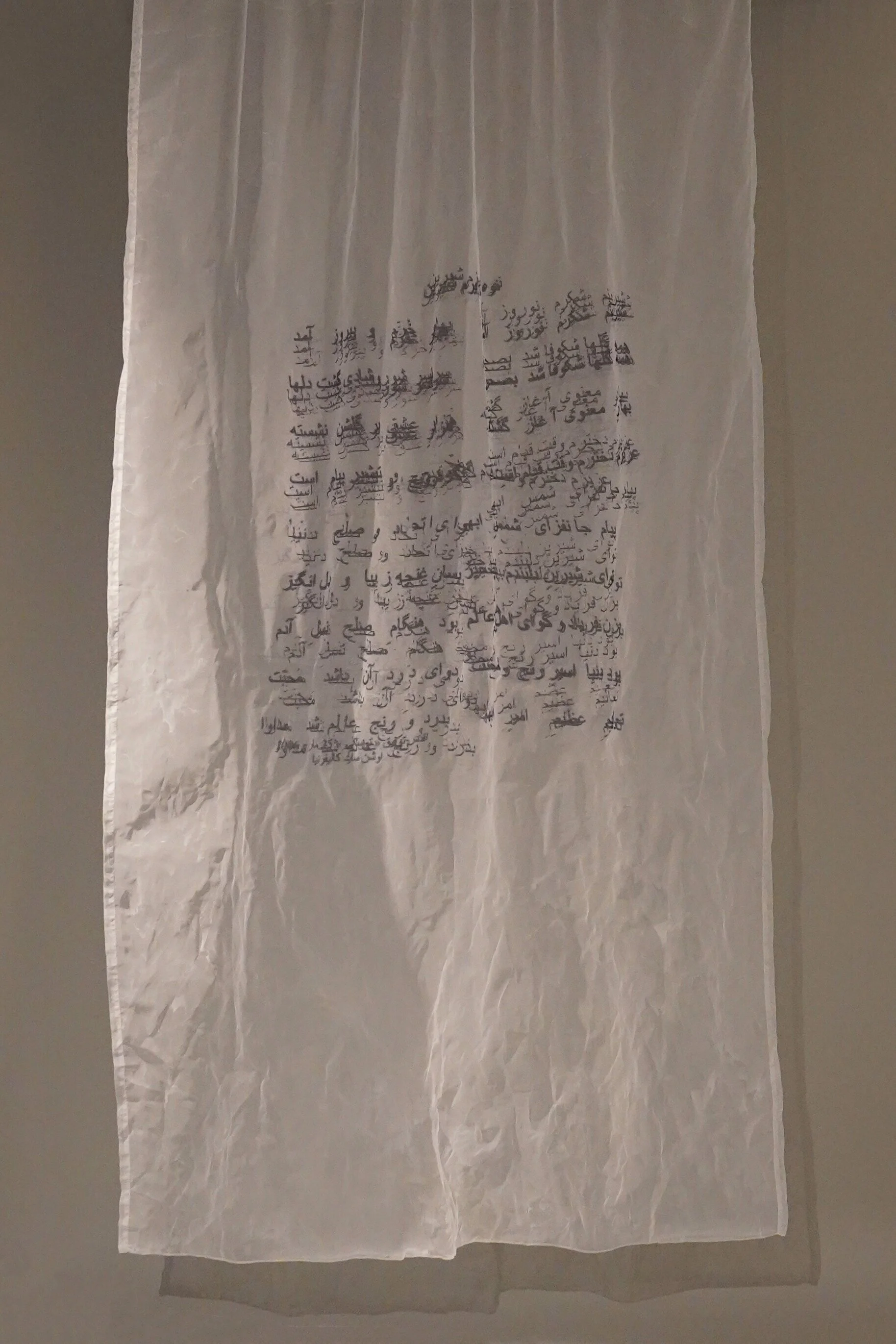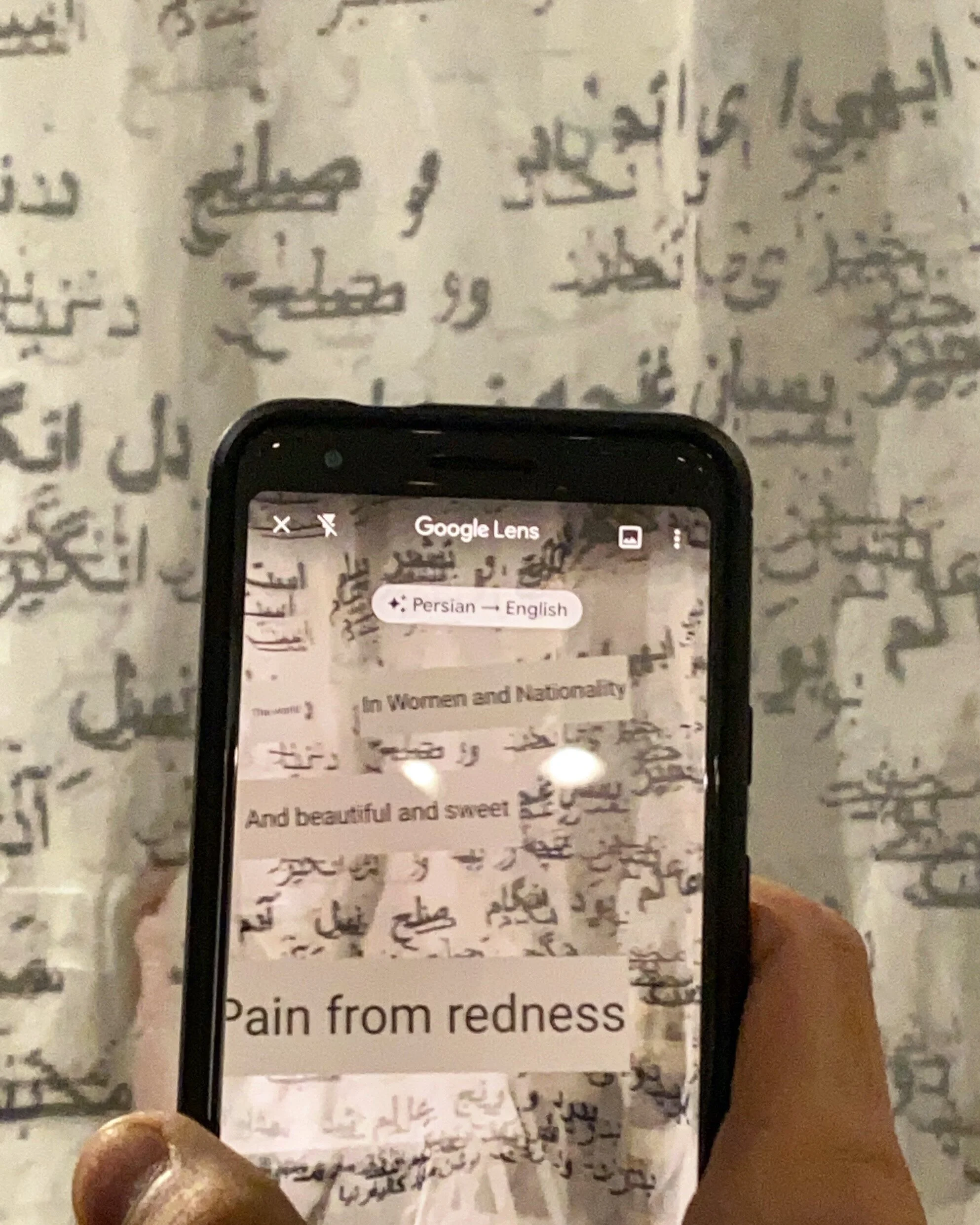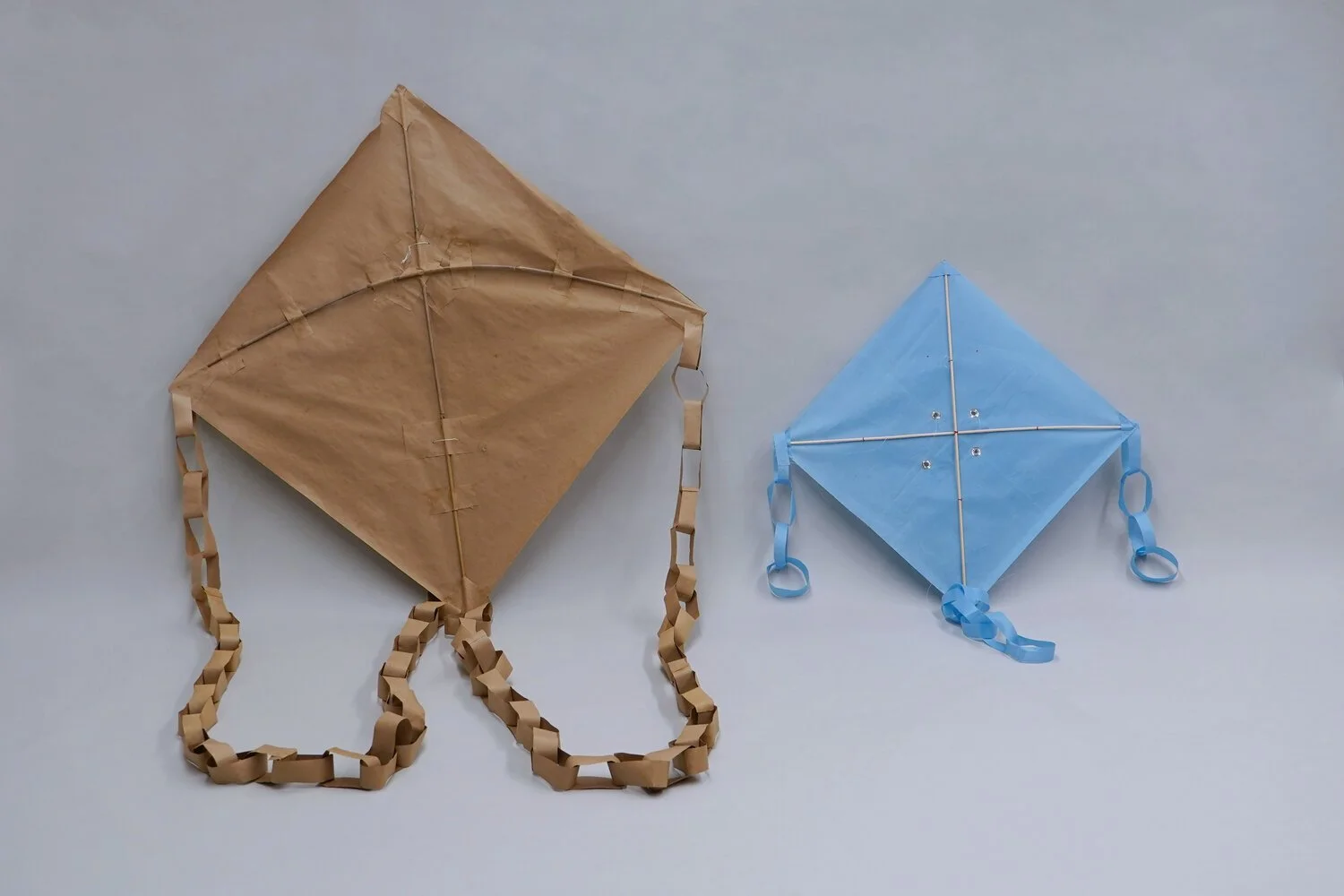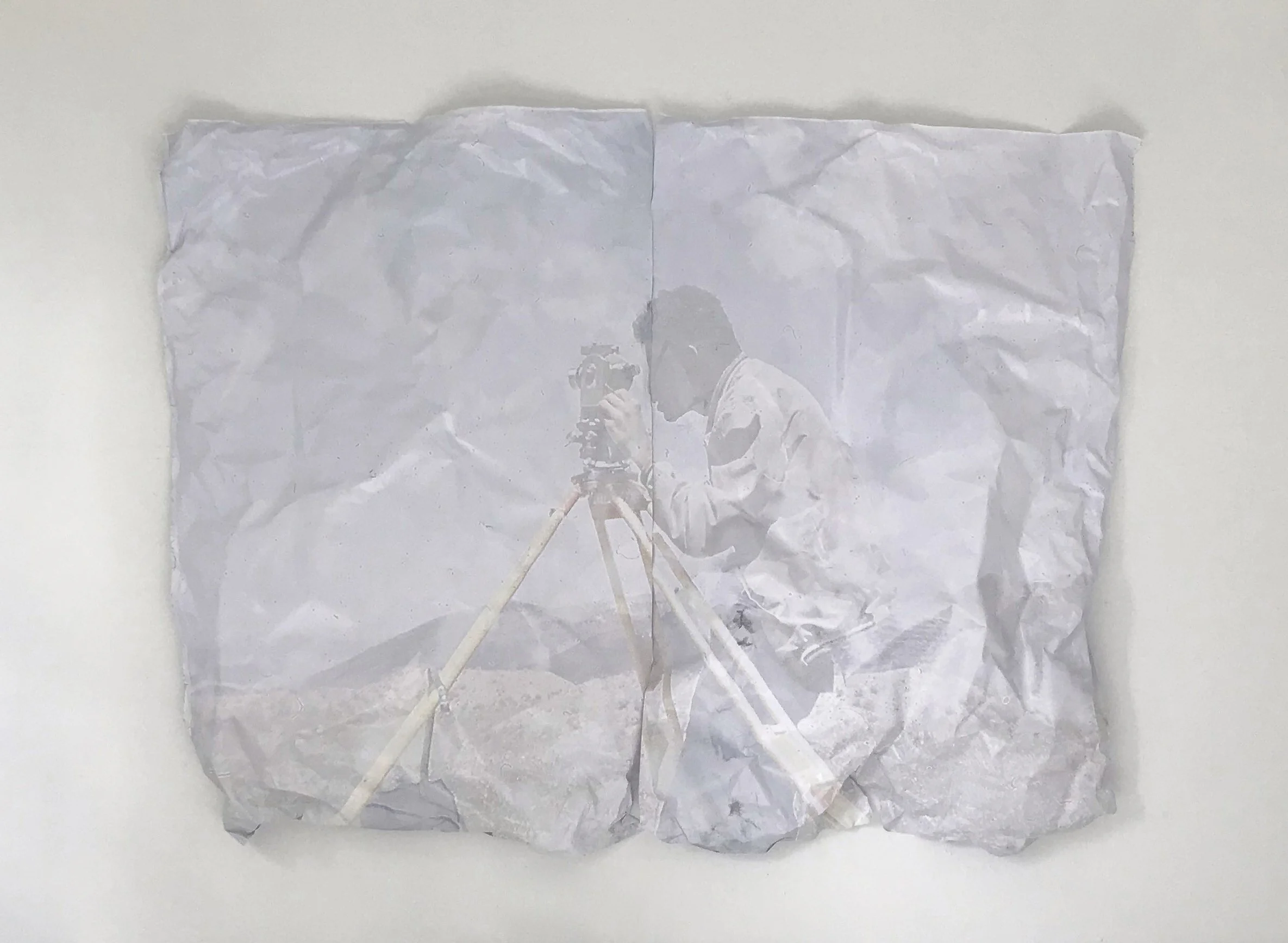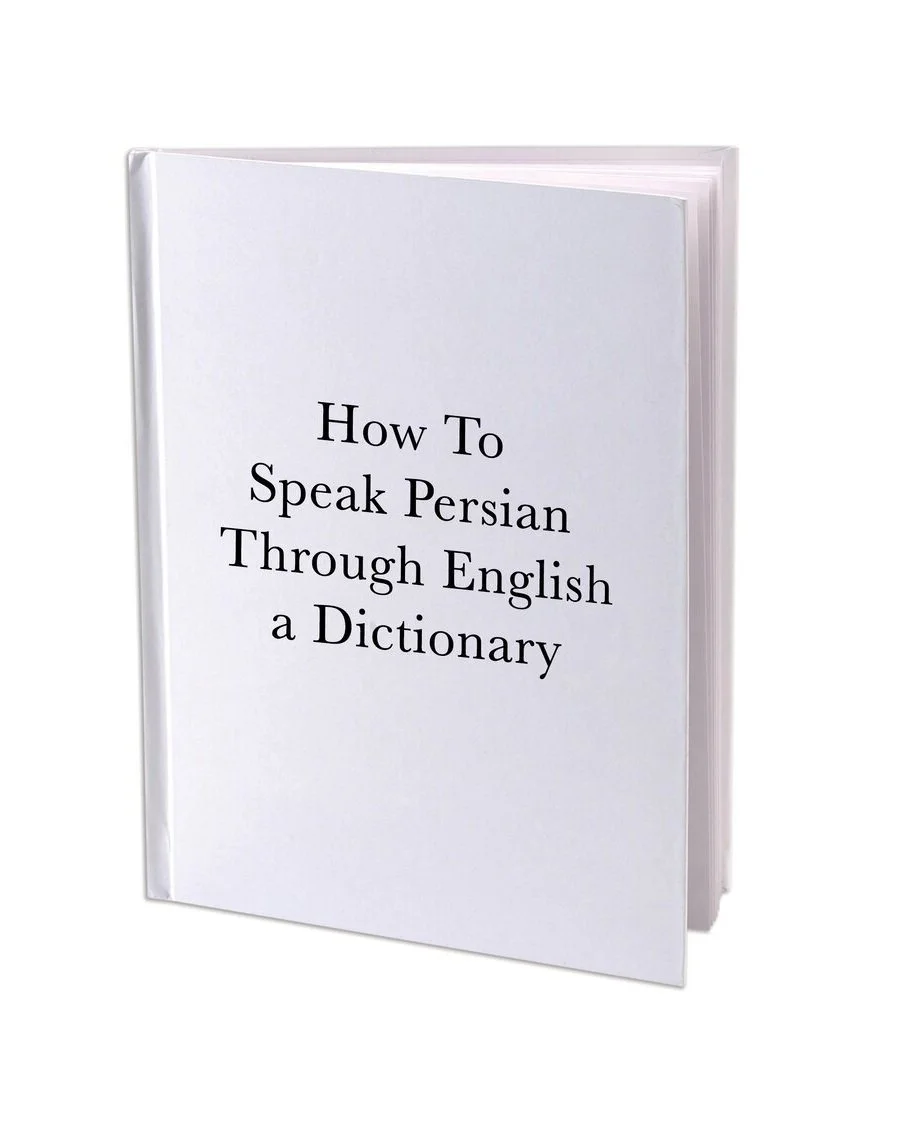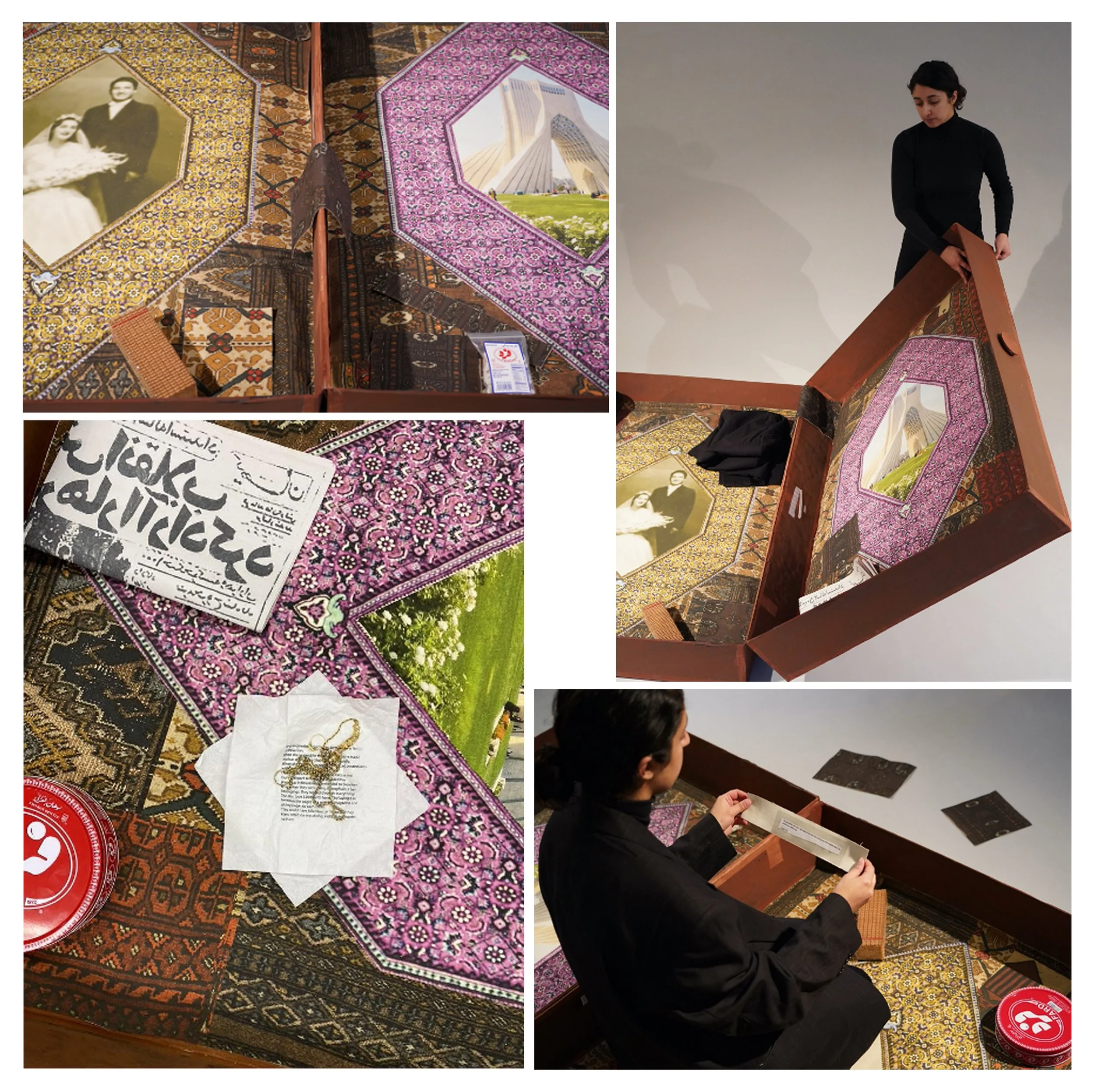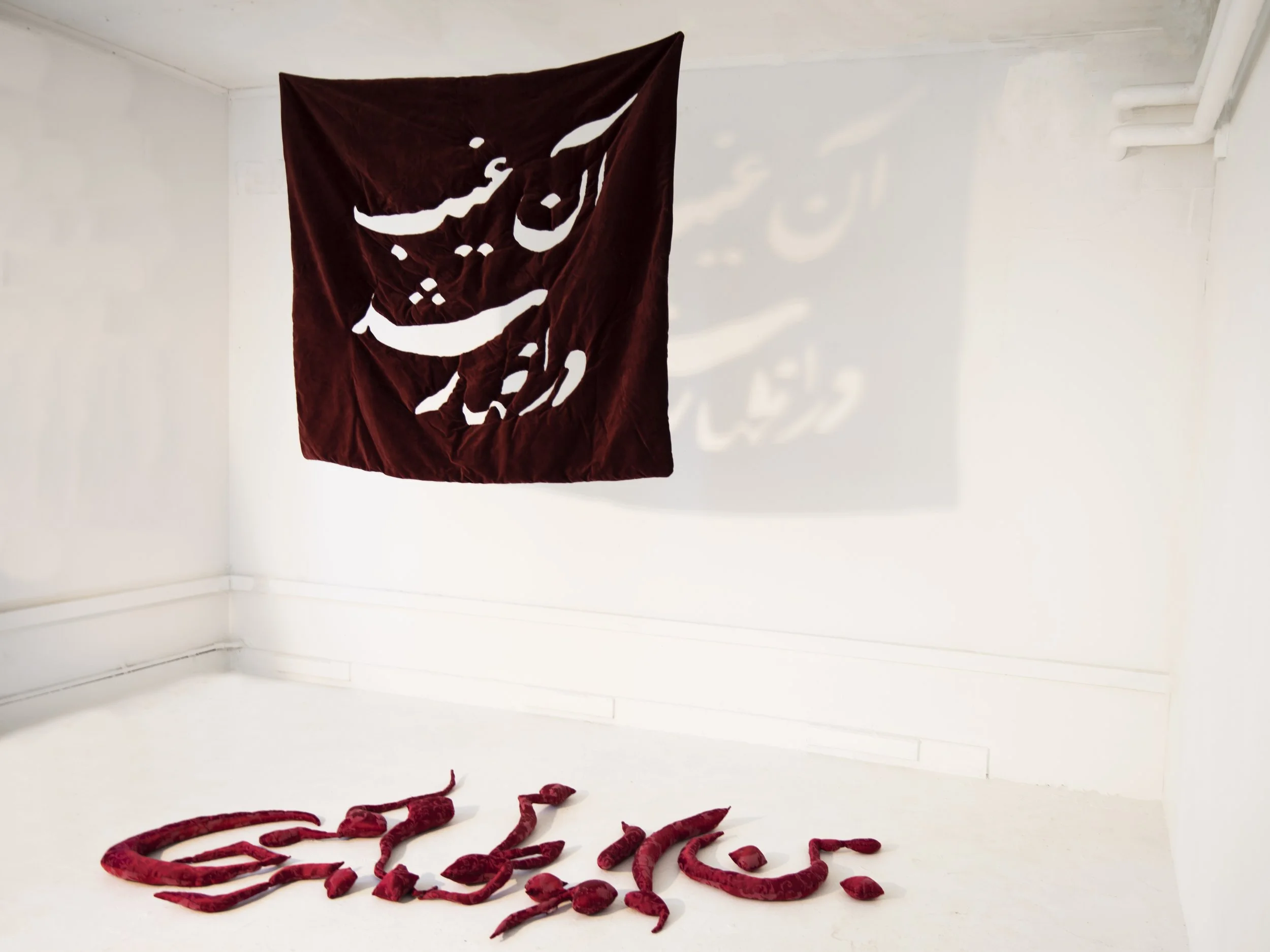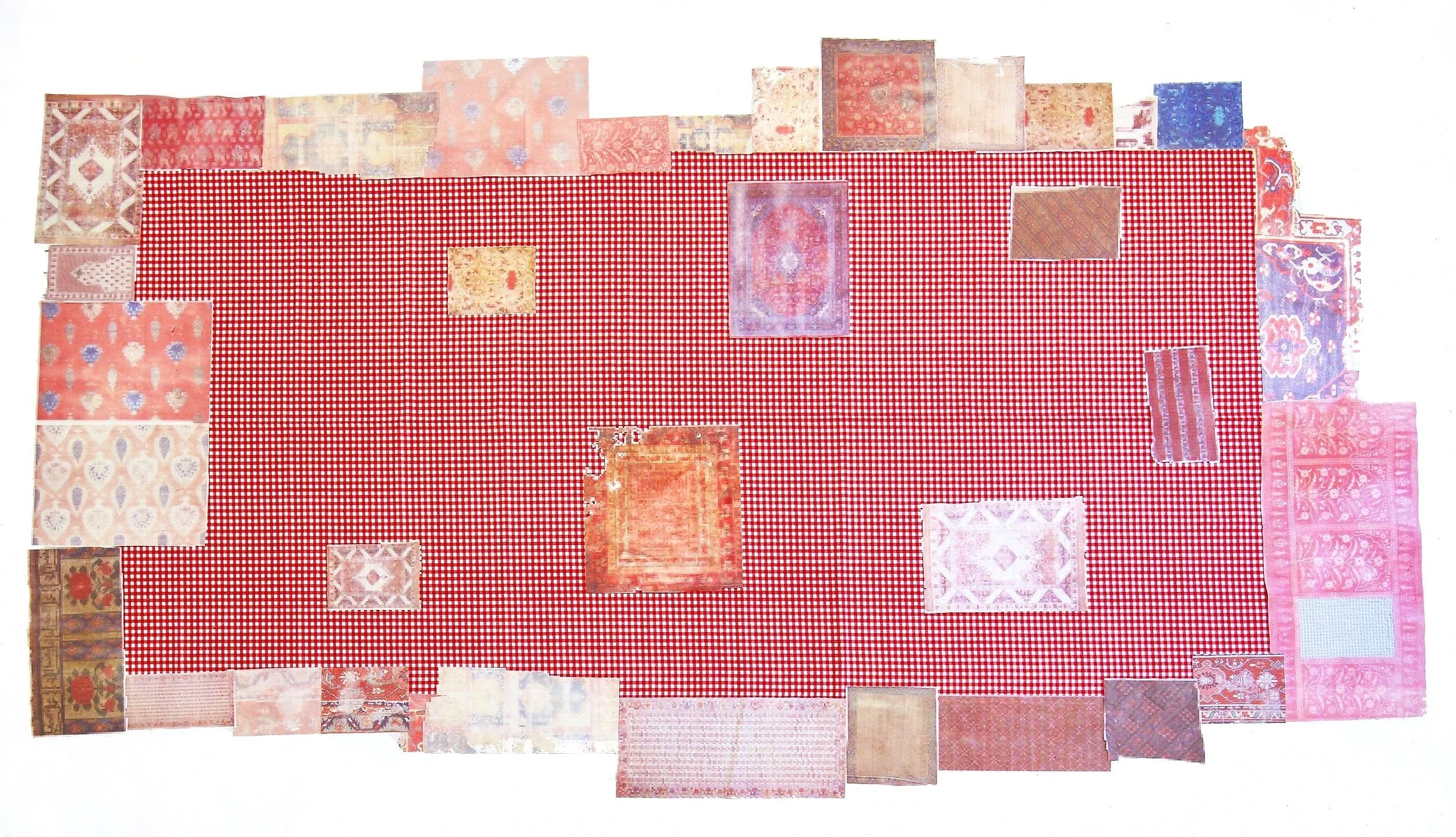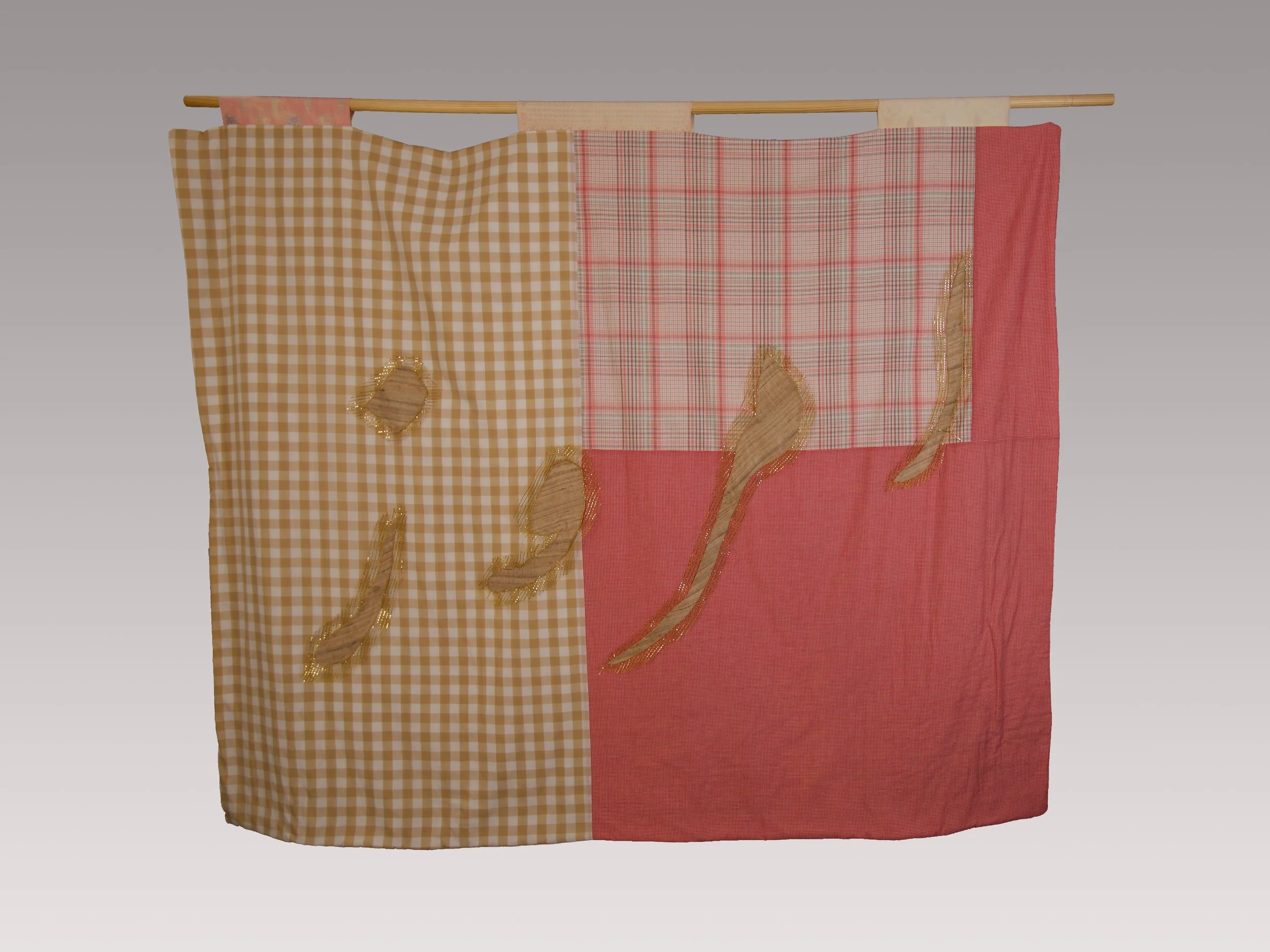Thinking About Migration, 2020 - 15’ x 10’ installation of 20 digital prints on gauze with fan
Thinking About Migration are prints of Persian rugs on gauze fabric. They blow and turn gently like ethereal spirits from a fan placed in the corner of the room that personifies the imagination of magic carpets. In old Persian stories magic carpets are woven with magic threads that are able to transport anyone to anywhere in the world instantly. The rugs, and their delicate gauzy materiality suggest bodies of Iranian migrants and the precarity of migration. Their delicate motion and scale creates an ambivalent sensation—simultaneously of overwhelming vulnerability and loss while suggesting a calm freedom swaying easily in the wind. As the wind continues to blow on these rugs the gauze ever so slowly begins to unravel itself when they move.
It might be not real // In Women and Nationality // And beautiful and sweet // Pain from redness, 2020
It might be not real // In Women and Nationality // And beautiful and sweet // Pain from redness, depicts a poem in the Persian language printed on a set of curtains, which are then visualized through a camera-based translation app that mediate’s the visual experience of the work—especially in the case of non-persian speakers, who will be exposed to completely new stories, disrupted metaphors, and divergent meaning from the original—to open questions both on the de/generative potential of translation and the ways digital media and automated translation mediate cross-cultural understanding.
How To Make It, 2019, series of drawings and sculptures
Every week I call my dad asking him how to make a particular object that he has prior knowledge of making. He translates how to make the object to me quickly over the phone where I make a drawing and then figure out how to build it from what I was told. My dad later does the same prompt for himself to compare his version with mine and to see how closely I followed.
The first object in this series of phone calls is a kite. Many important things have been left unsaid on his part, while I have also taken my own liberties in interpreting how to make the object.
No, I Never Went Back (ghost print), Photographic print byproduct, 3 of 6, 7’ x 5’, 2019
No, I Never Went Back is a series of six images from the only items my father brought with him from his homeland the day he had to leave - twenty photographs. This image of my father surveying landscape in Iran speaks to looking into an ever changing past while imagining a future.
No, I Never Went Back (installation), photographs on scrim, slide projection, audible sound interview, stack of persian books, 7’ x 9’ x 8’, 2019
No, I Never Went Back is a tent installation that includes a slide projection of the original slide images my father carried with him from Iran, paired with a sound piece of my father speaking about his memories. This immersive experience is mixed with Iranian songs of freedom.
How To Speak Persian Through English a Dictionary, 2019
Thinking about my relationship to the Persian language and how I relate to my family I made the project How To Speak Persian Through English. This project is a dictionary I created that contains quasi-homophones, for example, the English words “Good Office” sounds roughly like Khoda hafez, meaning Goodbye. Even though the Persian Kh sounds more like an H than a G, when said rapidly, and in the right context of casual conversation, this difference is overlooked, and the word is understood by a native speaker. This project allows the reader to communicate and “speak” someone else's language without the inconvenience of having to learn it. How To Speak Persian Through English came out of the experience of relearning Persian, my method of remembering new words was through English word combinations. I think of this project as a metaphor of how I connect to my family and culture by coming from a different place and speaking a different language while trying to meet them in the middle. This project comments in a humorous way on my own search for place, how migrants and foreigners are always feeling out of place and trying to connect to language on different levels by navigating disjoint meaning, where good office has nothing to do with goodbye.
The day I left Iran (Act 1), Giant briefcase, suit, magic carpets, sweets, tea, 2020
A one person play where I enact memories of my family members stories of migration that I have heard since childhood.
All The Mysteries Are Now Unveiled (translated from Persian), Quilted velvet, 6’ x 5’, 2018
All The Mysteries Are Now Unveiled is a quotation by Baha'u'llah, the founder of the Baha'i Faith, the religion practiced by my family that caused them to be persecuted and dislocated from their homeland, Iran. This blanket references a loss of comfort leading to new realizations.
I Want To Go Home (translated from Persian), Red tablecloth, poly fill, dimensions variable, 2017
I Want To Go Home is a set of Persian calligraphy pillows. My family has lost the right to visit our home in Iran. This work aims to create comfort from that loss.
Pixel Picnic / Everything I Never Knew, pixelated fabric transfers of persian rugs, vinyl picnic table cloth, 8’ x 4’ , 2019
Everything I Never Knew is an investigation around navigating inherited cultural elements relating to hybrid identity. It includes reimaginings of American picnics and magic carpets - my grandfather was a traveling rug salesman after leaving Iran.
Derooz, Emrooz, Farda (Yesterday, Today, Tomorrow), fabric tapestries, 2019
Derooz, Emrooz, Farda (Yesterday, Today, Tomorrow) I combine material, modulating stitching, layering, and scale, to reference material culture across the legacy of my family’s migration, going from the past to the present. Derooz (Yesterday), I use materials I imagine were in my family’s home in the past. Delicate lace tablecloths, connote a feeling of nostalgia with underlying pink-hued fabrics reminding me of the color shift in Ektachrome slide film, with the word “derooz” embodied in a gradient of gold sequins fading into the past.
In Emrooz (Today), the fabrics I use speak to ideas of hybridity, loss of the past. Instead of the lace tablecloth from my imagination of Iran, there is a vinyl red and white gingham, an ahistorical simulation of idealized Americanness, referencing the pastoral picnic blanket as appropriated into a mass-produced object. Constructed as a traditional quilt, Emrooz is an invention for me to figure out what it means to be an American as a hybrid subject.
